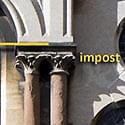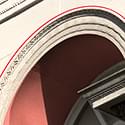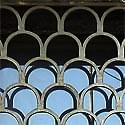
imbrication, a repetitive pattern based on an assembly of stacked inverted gutter tiles, often used in window security screens [Latin: imbrex, a hollow tile, gutter–tile, pantile].
The word is sometimes also used to describe a rather similar surface pattern based the appearance of a roof covering of flat fish–scale–shaped roof tiles.
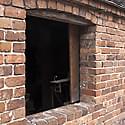
industrial windows, openings serving specific purposes in workshops, factories, and mills.
See also weavers’ windows. The earliest windows serving light industry were holes in the wall, protected during hours of darkness by timber shutters, and in this respect no different from the earliest domestic windows. This example, a nail manufactory, serves to illustrate the working conditions of this particular trade. Other trades and crafts were similarly disadvantaged. In The Wheelwright’s Shop, 1923, George Sturt records his experiences when in 1884 he took over his father’s business in Farnham, Surrey — “The shop was still but half opened when the two front doors had been unfastened. On either hand was a window, shuttered at night with two shutters put up from within and then fixed with a wooden bar. When the shutters had been taken down from the windows there was nothing to take their place. Snow, freezing wind, had a clear run. With so much chopping to do one could fairly keep warm; but I have stood all aglow yet resenting the open windows, feeling my feet cold as ice though covered with chips. To supply some glass shutters for day–time was one of the first changes I made in the shop”.
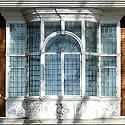
Ipswich window, a type of oriel window with rounded corners and an arched centre–light, sitting above panels of elaborate pargeting.
Named after Sparrowe’s House, Ipswich (1670) the type was picked up and used extensively by the Victorian architect Richard Norman Shaw and others. In the illustration shown side windows have been added to the basic Ipswich window form.
isinglass, sometimes known as muscovite, a translucent form of mica used in windows in Mediaeval Russia.



